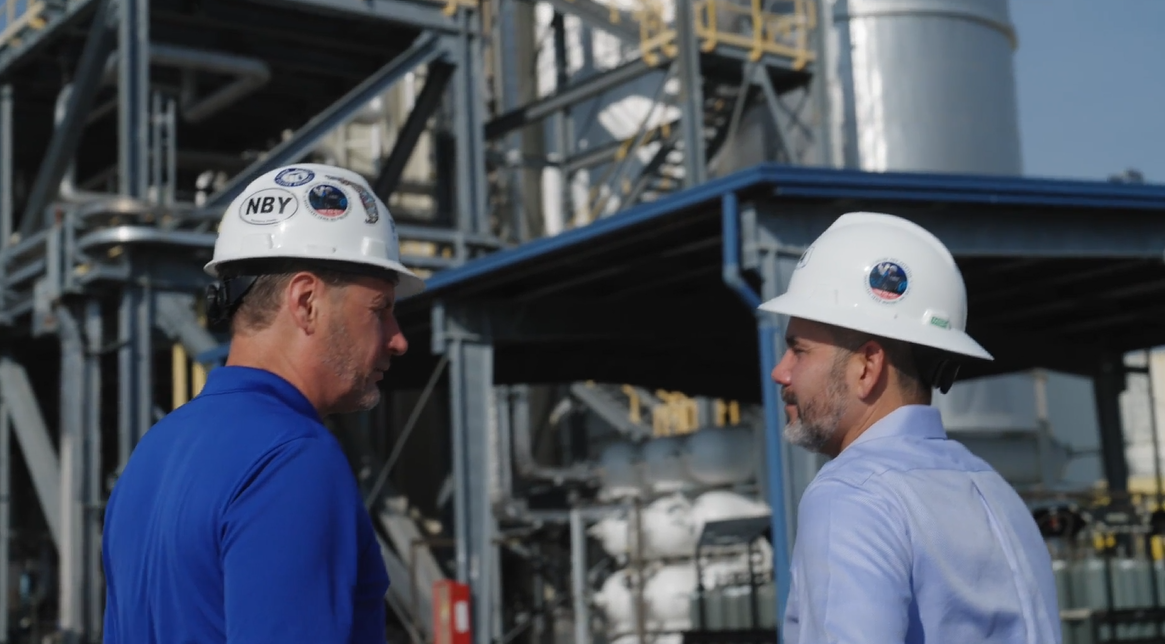In many areas of the U.S., demand for electricity is rising at a pace not seen in decades. In other areas, real growth has surpassed even robust expectations. This sudden increase has utilities and joint action agencies in a scramble for capacity — and in competition with more than just the usual industry players for megawatts.
As JAAs and public power utilities weigh opportunities to keep up with increased energy needs, they are finding new approaches to secure affordable power for their communities for years to come. With this, there comes an increased need for public power leaders to keep up with regulatory changes and how those changes might affect short- and long-term plans.
Accelerated Growth
“We are very blessed with growth and have been busy with transactions and steps to position ourselves for growth to meet our reliability objectives — and do it all at a time when we are working to become the most affordable utility in Texas,” said Elaina Ball, chief strategy officer at CPS Energy. The public power utility serves the city of San Antonio and about 30 additional communities in Texas.
CPS Energy already has a big footprint as one of the top five generators in the ERCOT market. Still, the combination of retiring assets and robust growth in population and demand from large loads, like data centers and advanced manufacturing, means CPS Energy is in a flurry expanding its power supply portfolio.
Ball said CPS Energy’s current generation plan calls for strong but modest growth, and that there is a lot of speculative growth associated with data centers and large loads.
“Anything, you name it, we have prospective growth. Even if 20% shows up, it will be massive amounts of growth,” she said.
CPS Energy has a current peak demand just under 6 gigawatts, which includes about 200 megawatts of growth in recent years. Ball said the utility has over 2 GW under contract and is ready to contract for another 8 GW.
While new projects, including large solar and storage assets, have been underway to help meet the growth, Ball noted the “headline-grabbing” work has been around its acquisitions and increased shares in major plants. CPS Energy recently bought about 1,700 MW from various Talen Energy assets, mostly combined cycle plants. The utility also purchased a two-thirds equity into another natural gas project, growing its portfolio by 1,600 MW.
Ball said the acquired facilities are quite new, having been constructed in the past four years. Ball said the per kilowatt cost of the acquistions were about a third of the estimated cost to build similar new capacity. The purchases also moved up a strategy from CPS Energy’s latest generation plan to put in peaking units in the 2030s, saving its customers an estimated $3 billion.
In addition to the price protection from the moves, “it moved supply chain and construction risk off the table and brought in generation earlier than we need,” said Ball.
CPS Energy is also a transmission owner and planner in ERCOT and sees the effort to build transmission infrastructure as equally challenging as the efforts on generation. Ball said CPS Energy is one of a handful of ultra-high-voltage transmission owners in Texas and will be building out substantial sections of that system, with construction costs likely in the billions of dollars.
Buying Time
At the end of 2025, Florida Municipal Power Agency will close on its third power plant acquisition, wrapping up additions of about 340 MW to its generating fleet, about a 15% increase for the JAA, which now owns and operates around 2,100 MW of generation assets. About half of that increase covers an immediate need to replace retiring assets, and the rest covers FMPA’s expected growth needs through 2032.
“The acquisitions bought us several years that we’re now covered for,” said Jacob Williams, general manager and CEO of FMPA.
Cities across Florida have seen roughly 1% to 2% increases in annual demand. Williams said FMPA’s utility members across the state are seeing the most growth from rising populations, and not as much from new large loads such as data centers.
“Many municipals in the state [have been] relying on the spot market for capacity … and that market has dried up,” he said. “Members are considering joining to get a much longer-term relationship because there are limited spot power options in the market.”
The combined cycle plant acquisitions are with facilities that were coming off long-term contracts with investor-owned utilities. Williams said FMPA was the sole bidder on these plants, so it was able to negotiate deals that were favorable enough to allow for buying all three. The acquisition cost was significantly less per kilowatt compared with current estimates to build new facilities.
“The cost of new build right now is out of sight,” he said, “and that’s seven years out to get it online.”
In addition to getting a deal on the price, securing ownership of the facilities means FMPA can make updates to further increase its capacity. Williams is optimistic that upgrades can lead to 50–100 additional megawatts on the facilities, which would cover another four to six years of load growth.
The gas-fired facilities aren’t the only new assets for FMPA. Williams noted several recent solar projects that have come online and said the JAA is exploring where to strategically place batteries, such as in the Florida Keys, which are served by a single line of transmission.
“Adding batteries gives us more reliable capacity and solves transmission problems. Not doing it to solve all our problems, but it does add capacity that would be helpful for us in peaking conditions,” he said.
“If your only option is to build new, that’s a real problem,” said Williams. “Public power needs to look at existing assets and if you can get the most out of them. A lot of people have the opportunities, they just need to find them.”
Every facility will have its own constraints and options, he said, but leaders should take a look at what the options are and decide if any paths are worthwhile for serving immediate needs. Options might include running facilities for emergency capacity or delaying planned retirement.
Williams advised public power leaders to start looking for those opportunities now; otherwise, he expects that in the future utilities will be “in a bidding war with people who have a much bigger bank account.”

Support and Priorities
Anamika Singh, a senior analyst with the California Public Utilities Commission, sees strong regulatory momentum behind the capacity build-out that is needed in the coming years. She said regulators have prioritized actions to enable critical electricity generation projects to interconnect to the transmission grid. However, she acknowledged that formal regulatory processes take time and determining which projects to prioritize can be more complex than it appears.
“I see a big push toward building … there is a due process that needs to be followed, and with the growing interest in energy infrastructure projects, the queue sometimes takes longer than we expect. However, targeted efforts by [the Targeted Energy Development] Task Force and other agencies have brought a significant amount of new capacity online much faster than anticipated,” she said.
Singh noted that, in California, more than 5,500 MW of new nameplate capacity came online in 2023 and 7,000 MW were added in 2024. There is roughly 21,000 MW of additional resources under contract and in development to connect to the grid by 2028, most of which is storage.
“After about two decades of stagnant electricity load growth, we are in such a critical juncture … whatever capacity we can build, we are building just enough to keep pace with the surge in electricity demand,” said Singh.
She said focus is not only behind prioritizing projects which entered first in the queue, but on which projects are critical to the grid’s immediate needs.
“When we look at the project, we try to assess what kind of challenges are getting addressed for the grid,” said Singh. As examples, she said projects that support reliability or that will add capacity to areas with transmission constraints.
Singh sees this as an interesting moment for the industry, one where the speed of bringing new supply online will give a competitive edge. “I’m hopeful about how quickly we are building, but the challenges are what make the work exciting. We have to remember that we’re updating a machine that is more than 100 years old, and that means reassessing our approaches as the industry evolves. We need to be very careful as we are navigating emerging and new technologies,” she said. “We are moving at such a fast pace that barely have time to fully understand the impact of one technology before the next one arrives.”
Consider Every Electron
As FMPA looks further down the line, Williams said the agency knows it will eventually need to build new units, and it is interested in how it can get involved with next-generation nuclear. He said natural gas still dominates Florida’s market and doesn’t see that changing anytime soon.
“If we’re going to commit to expensive new units, [then we] need to make sure natural gas is affordable on a long-term basis,” he said. To him, this means greater assurance that environmental rules “aren’t going to wipe out the investment that we just made.”
“Affordable means something to public power. And we don’t ever want to forget that,” Williams said.
Ball said CPS Energy is also contemplating adding advanced nuclear to its portfolio in the next decade, adding that the utility will “let the math and community input guide our decisions.”
She sees a diverse portfolio as key to affordable, reliable power and to developing the capacity needed for growth.
“We need every electron we can get on the grid right now. Hitting one [type of fuel source] isn’t helpful; an all-of-the-above strategy is,” said Ball. “We have climate goals with our community, and we’re going to glide into a reduced emissions portfolio over the next couple of decades. That’s where we’re headed, and that’s where the technology’s headed.
“I would not get too rationalized into one particular technology. There’s so much uncertainty — financially, from a supply chain perspective, from a technology perspective. Diversity still matters and will matter for the foreseeable future.”
Williams sees recent federal actions as opportunities to rethink strategy, while staying cautious about what further policy change is needed to help the industry build affordably. He’s eager to see the next iteration of the Clean Power Plan to see how retirements might be adjusted, if transmission interconnection processes improve to better prioritize reliability, and for judicial reviews and permitting to be streamlined so project timelines become shorter again.
Ball credited the Texas Legislature with creating an environment that allows for growth.
“State legislators are attuned to the growth for our state and economy,” she said, offering as an example S.B. 6, which she said addresses reliability and cost and provides “policies that attract large users but also ensure that we’re protecting all of our customers and making sure they are paying their fair share.”
“The U.S. needs [artificial intelligence] technology, but we don’t have the power to do it. Public power can rise and be part of the solution,” Williams said. “Some use an analogy of the moonshot, but this isn’t a one-time event. We will need a lot of power moving forward. Don’t focus on what you can’t do, focus on what you can do.”

